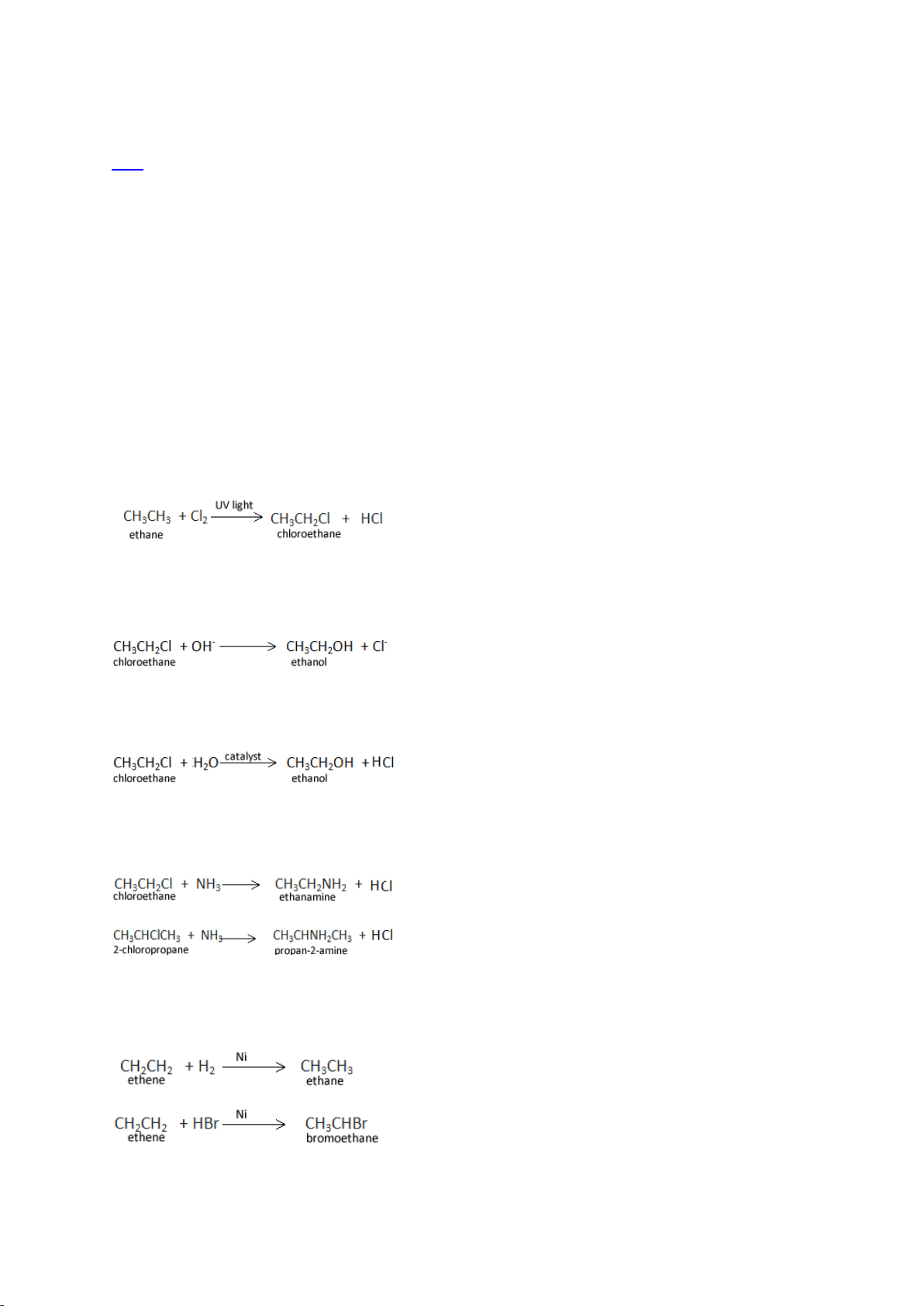



Study with the several resources on Docsity

Earn points by helping other students or get them with a premium plan


Prepare for your exams
Study with the several resources on Docsity

Earn points to download
Earn points by helping other students or get them with a premium plan
Community
Ask the community for help and clear up your study doubts
Discover the best universities in your country according to Docsity users
Free resources
Download our free guides on studying techniques, anxiety management strategies, and thesis advice from Docsity tutors
Various chemical reactions of alkanes, haloalkanes, and alkenes, focusing on combustion, substitution, and addition reactions. Topics include the definition of saturated and unsaturated hydrocarbons, balanced chemical equations for combustion reactions, and the production of alcohols and amines via substitution reactions. Addition reactions and the formation of polymers like polyvinyl chloride (pvc) are also discussed.
What you will learn
Typology: Lecture notes
1 / 3

This page cannot be seen from the preview
Don't miss anything!


Lesson 9 Chemical reactions with alkanes, haloalkanes and alkenes.
Click to revise reaction pathways
Saturated hydrocarbon = a compound that has single carbon to carbon bonds (C-C) and is composed of hydrogen and carbon atoms only. Unsaturated hydrocarbon = a compound that has one or more double carbon to carbon bonds (C=C) or even a triple carbon to carbon bond and is composed of hydrogen and carbon atoms only.
All alkanes and alkenes undergo combustion with oxygen to produce carbon dioxide and water. In fact hydrocarbons will undergo combustion in oxygen to produce CO 2 and H 2 O. a) 2C 2 H 6 (g) + 7O 2 (g) 4CO 2 (g) + 6H 2 O(g)
b) C 2 H 4 (g) + 3O 2 (g) 2CO 2 (g) + 2H 2 O(g)
Alkanes undergo reactions known as substitution reactions where a hydrogen is substituted for a chlorine or some other halogen. This usually occurs in the presence of UV light.
Haloalkanes can the be used in further substitution reactions to produce other beneficial compounds. Chloroethane, for example, can undergo a substitution reaction with NaOH to produce ethanol
Ethanol can also be produced via a substitution reaction between chloroethane and water in the presence of a catalyst.
Not only alcohols can be produced via substitution reactions with haloalkanes but amines as well via reactions with ammonia.
Addition reactions. As the name implies addition reactions involve the addition of a small molecule across the double bond of an alkene.
The reaction above, where water is used as a reactant is sometimes referred to as a hydration reaction.
Alkenes can also undergo addition reactions to form long chain polymers. This type of reaction is known as addition polymerisation. Alkenes can attach to each other across the double bond.
Eg Polyvinyl chloride (PVC) is a durable and versatile plastic. It is made from chloroethene monomers. Monomers are the small molecules that join to form long molecules, generally known as polymers.
b) X = but-2-ene CH 3 c) X = prop-2-ene
trans-pent-2-ene reacts with Cl 2 in an addition reaction. Name all the possible isomers that are possible and give write their structural formulae. 2, 3-dichloro pentane
Styrene is a plastic commonly used for plastic and plastic cutlery. The repeating unit in the polymer chain is shown on the right. Draw the monomer of this polymer. What type of reaction forms this plastic? Addition polymerisation
Identify each species involved in the reaction pathways shown below. Identify the type of reaction that takes place at each step.
a) A = 2-chloropropane, formation of A is an addition reaction, B = propene